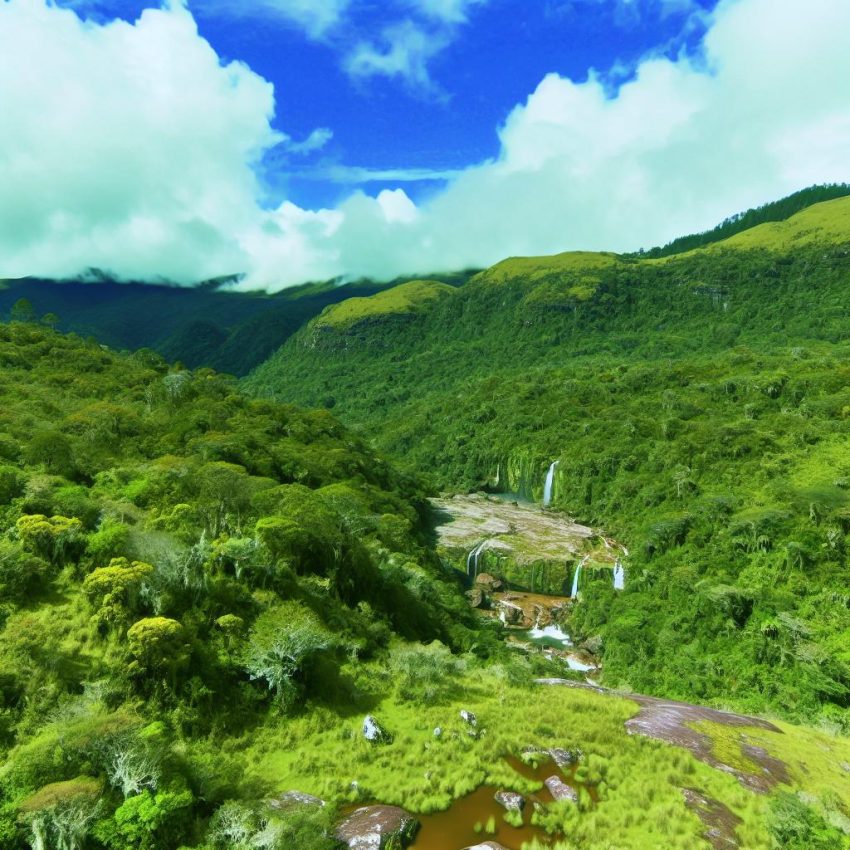Overview of Calilegua National Park
Located in the northwest region of Argentina, Calilegua National Park is nestled in the Jujuy Province. Noted for its remarkable diversity in ecosystems and abundant biodiversity, the park was established in 1979, covering an area of over 76,320 hectares. This vast expanse is marked by a range of altitudinal gradients, each contributing to the park’s vast ecological diversity.
Geographical Features
The defining characteristic of Calilegua National Park is its rich, subtropical Yungas forest. This lush habitat is home to a variety of plant and animal species, each thriving in the different altitudinal zones of the park. Elevations within the park vary significantly, from as low as 400 meters to over 3,000 meters above sea level. This variation in height results in distinct ecological zones, each supporting a unique microclimate that fosters specific flora and fauna.
Climate
Calilegua National Park is characterized by a subtropical climate that plays a pivotal role in sustaining its diverse ecosystem. A pronounced wet season spans from November to March, during which the area receives substantial rainfall. This moisture is crucial for maintaining the dense forest cover that is synonymous with the park. Conversely, the drier months, stretching from April to October, offer ideal conditions for trekking and exploring the park’s trails, providing an opportunity to experience its natural beauty in a more temperate climate.
Flora and Fauna
The impressive biodiversity of Calilegua National Park is evident in both its flora and fauna. Among the plant life, one can find majestic giant ceibo trees, delicate ferns, and vibrant orchids. These species are just a fraction of the lush greenery that populates the park, contributing to its reputation as a rich ecological haven.
In terms of fauna, the park is home to some fascinating species. The elusive and powerful jaguar roams these lands, embodying the untamed spirit of the region. Other notable inhabitants include the gentle tapir and a dazzling array of bird species, such as colorful toucans and majestic eagles. Each of these species plays a crucial role in the ecological balance of the park, highlighting its vital conservation value.
Visit the official site to explore more about the conservation efforts and the unique species that inhabit this natural sanctuary.
Conservation Efforts
Calilegua National Park faces several challenges, including threats from illegal logging and hunting. Despite these issues, there are ongoing efforts to ensure the preservation of the park’s natural resources. Conservation strategies are realized through the collaboration of national park authorities and local communities. By working together, these groups are able to implement sustainable practices that mitigate human impact and foster a more balanced relationship with nature. Additionally, the promotion of eco-tourism seeks to provide economic incentives for conservation, encouraging visitors to engage with the natural world responsibly and sustainably.
Visiting Calilegua National Park
For those eager to explore this ecological treasure trove, Calilegua National Park is a prime destination for adventure and discovery. The park offers numerous hiking trails that allow visitors to delve into its varied landscapes and observe its diverse wildlife. Engaging with local guides is highly recommended, as they provide valuable insights into the park’s complex ecosystems, offering a deeper understanding and appreciation of its natural wonders.
Given the park’s relatively remote location, it is crucial for potential visitors to prepare adequately. Planning accommodations and travel logistics in advance ensures a smoother and more enjoyable visit to this breathtaking region. By doing so, visitors can immerse themselves more fully in the natural splendor that Calilegua National Park offers.
In conclusion, Calilegua National Park stands as a significant natural reserve with an essential role in environmental conservation. Its vast array of ecosystems not only provide sanctuary for countless species but also offer unparalleled opportunities for ecological education and adventure tourism. The park’s continued preservation is vital for the sustenance of its unique biodiversity, fostering a harmonious relationship between humans and nature.

